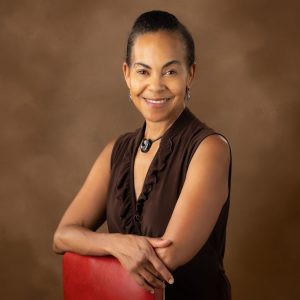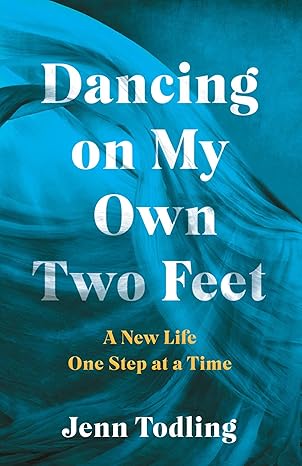Integrating my Author and Therapist Selves
Integrating my Author and Therapist Selves
Lisa Williamson Rosenberg

Photo by Michael Stahl
My father took my aspirations of being a novelist seriously from the start. His advice? “Get your first four chapters in, get your advance, and get to work.” Which was the way of the publishing world when he was chief art director of Viking Press back in the 60’s. I don’t remember Dad ever using terms like “query letter,” “agent,” or “submission.” He certainly never mentioned “Platform.”
Today, you need a completed, polished novel and an agent to sell it in order to get an advance—which may or may not cover expenses so you can focus exclusively on revising your book. You’re also required to have a “brand,” to put yourself “out there,” to maximize your social media presence. I cannot imagine what Dad—who died in 1995, before the internet dominated all our lives—would make of that last sentence.
And here’s the thing which makes expanding my online footprint daunting. I’m a psychotherapist, a Licensed Clinical Social Worker to be precise. Being discreet—as opposed to “out there”—is part of my job description. Not just regarding the lives and identities of my clients, but also my own. Not that anyone expects therapists to be blank slates anymore. We are no longer silent, bearded men upon whom patients superimpose whatever traits their unconsciouses desire. Now clients read our full bios, view our profiles, photographs, and our practice mission statements, accessing everything relevant to their therapeutic needs and more. Psychotherapists are people. Google-able people.
In the 22 years I have been practicing, I’ve found that clients want you to be real with them, open to sharing bits of your life that may increase the connection between you—without making it about you. It’s a tough balance, knowing when and how much to self-disclose. Many of my Black woman clients chose me because they wanted a therapist with first-hand knowledge of racism, particularly the racial trauma that comes from being an American woman of African descent. Again, many of my clients are mothers who appreciate knowing that I’ve raised children of my own. When I self-disclose, it’s usually in the form of a brief illustrative anecdote that relates to the client’s story, though I’m always clear that their experiences are unique. It also depends on the situation and the individual. Some clients feel safest when they know something about me, others prefer to know nothing of my existence outside the office.
Another factor is that I live in the town where I practice. Over the years, plenty of clients have seen me out walking my dog or herding my children around a grocery store. The notion of being spotted by clients while I was out living my “real” life used to fill me with anxiety.
My finest moment occurred about sixteen years ago, when my son, completely lawless in the manner of two-year-olds, barreled into a client of mine at a swimming pool. The client was an older male—hence not a mom—and for what it mattered, I had on a bikini. Awkward enough to run into a client while your child is acting out, dashing the fantasy I believed clients had of therapists having their shit completely together. It was another thing entirely to stand in front of a male client wearing what was essentially underwear. Cringes all around.
My supervisor at the time, a lovely older woman who had raised two children while practicing therapy in the town where she lived, said, “You’re human. They all know you have a life.” She encouraged me to raise the encounter with the client when I saw him next, which I did. We both laughed about it. He asked how old my son was and I told him. No mention was made of the bikini. It would take me years for these encounters to stop rattling me, to stop trying to present a shrink-perfect image at all times.
Being a writer means making a conscious choice to present a public version of my private self. This process actually began with a talk I had been invited to give at a synagogue about the meaning of being a Black Jew, a member of two distinct groups—one ethno-racial, the other ethno-religious. An announcement of the talk caught the attention of author, journalist and now my friend, TaRessa Stovall, who is also Black and Jewish. I credit TaRessa with coining the term “Blewish”—an identity of multitudes, including Daveed Diggs, Rain Pryor, Rebecca Walker, and Tracee Ellis Ross. TaRessa interviewed me before the talk, wrote a piece about it for our local paper. While I ultimately published the talk in Interfaith Families Online, it was TaRessa’s article which gained the most attention. Some people got confused and thought I’d written it; others read it and googled me, turning up little besides an article I’d gotten published in Social Work and Healthcare about African American Women and their exclusion from the literature on body image disturbance and eating disorders.
But there was a difference between a social worker writing about clinical issues and a woman sharing her personal story. The former was about research, interviews, and observation; the latter was just about me. After the talk at the synagogue, my visibility surged in a way I wasn’t sure I wanted it to.
Nevertheless, I started blogging a few years later, which was the biggest breakthrough for me. I wrote about my first career as a ballet dancer, my residual relationship with ballet, my subsequently complicated relationship with my body. I wrote about my eating disorder history, my experience as a Black biracial child growing up under the umbrella of my mother’s white privilege, how it vanished when I was with my Black father. I wrote about my parents’ marriage, my father’s death and, much later, my mother’s. I wrote from my heart, uncensored, sharing my raw, unfettered emotional core. I wrote about my grandmother’s rejection of me, my evolving Black identity, my evolving Jewish identity, motherhood, Obama, dogs, Betty Grable—you name it, I wrote about it. And … it was out there on the internet for anyone to see. Including my clients, most of whom frankly don’t read it. That’s not what they need from me. Either way, it’s okay. As my supervisor said, my clients know I have a life.
Soon online journals were publishing my essays. If you read those, especially the ones in Longreads and The Common, you know exactly who I am. Again, it has to be okay. At one point I considered a pen name to separate the writing me from the therapist me. That didn’t feel right.
By now, I’m experienced enough, confident enough as a therapist to handle the duality. As a writer you don’t want to hold back. You need to be real, not stiff or sanitized. You need to dig deep and notice what you feel. Which is why writing has made me a better therapist and vice versa.
Which brings me to now. I have a novel—a work of fiction—not a work about therapy or my own life—coming out in a matter of months.
Without using any “material” from clients, Embers on the Wind touches upon subjects I discuss with them daily—motherhood, family, race, gender, and identity. What does it mean to love and loathe a sister at the same time? What does it mean to be underestimated, undervalued, and yet resented for one’s perceived good fortune? What does it mean to struggle when others appear to have everything handed to them? What does it mean to be a modern Black woman living with the weight of the past, of your ancestors’ hopes, fears, and dreams?
And suddenly, the overlap of all my work is clear, without need for compartmentalization. I can allow my thoughts about life, parenting, race, and politics. I can allow my awareness of the cultural context to inform my therapy practice. I wear multiple hats, but beneath them, I remain the same, integrated self.
—
Lisa Williamson Rosenberg is an author and psychotherapist specializing in depression, complex trauma and racial identity. She is also a former ballet dancer, with essays published in Longreads, Narrative.ly, Mamalode, The Common, and fiction in Literary Mama and The Piltdown Review. Lisa’s debut novel, Embers on the Wind is coming 8/22 from Little A. She two others in progress. She is represented by Dr. Uwe Stender, founder of TriadaUS Literary Agency.
Lisa graduated from Princeton University, got her Master’s from Hunter College School of Social Work, her post-masters certification in family therapy from the Ackerman Institute. Before becoming a therapist, Lisa was a ballet dancer with the Pennsylvania and Pacific Northwest Ballet Companies.
A native New Yorker, Lisa now lives in Montclair, New Jersey with her husband and dog. She is the mother of two college students.
EMBERS ON THE WIND
 The past and the present converge in this enthralling, serpentine tale of women connected by motherhood, slavery’s legacy, and histories that span centuries.
The past and the present converge in this enthralling, serpentine tale of women connected by motherhood, slavery’s legacy, and histories that span centuries.
In 1850 in Massachusetts, Whittaker House stood as a stop on the Underground Railroad. It’s where two freedom seekers, Little Annie and Clementine, hid and perished in a fire. Whittaker House still stands, and Little Annie and Clementine still linger, their dreams of freedom unfulfilled.
Now a fashionably distressed vacation rental in the Berkshires, Whittaker House draws seekers of another kind: Black women who only appear to be free. Among them are Dominique, a single mother following her grandmere’s stories to Whittaker House in search of an ancestor; Michelle, Dominique’s lover, who has journeyed to the Berkshire Mountains to heal her own traumas; and Kaye, Michelle’s sister, a seer whose visions reveal the past and future secrets of the former safehouse―along with her own.
For each of them, true liberation can come only from uncovering their connection to history―and to the spirits awaiting peace and redemption within the walls of Whittaker House.
BUY HERE
Category: On Writing




























